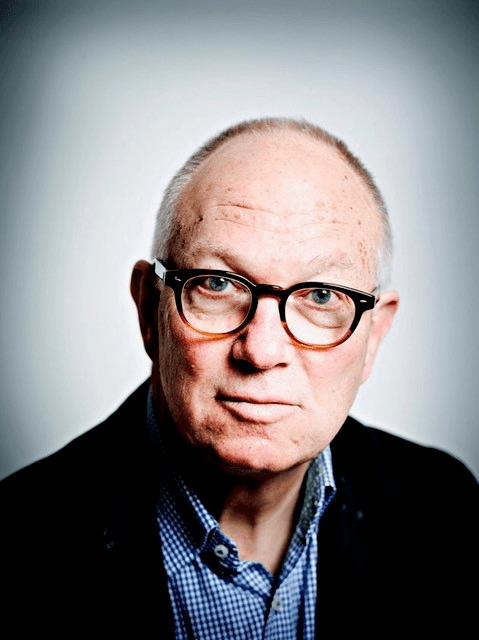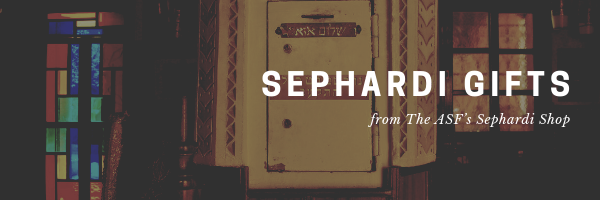In Honor of ASF Broome & Allen Scholar Hélene Jawhara Piñer on winning the 2023 Gourmand World Cookbook Awards Best Jewish Food Culture Book for her second book, Jews, Food, and Spain: The Oldest Medieval Spanish Cookbook and the Sephardic Culinary Heritage, which was also a 2022 National Jewish Book Award Finalist
Click here to dedicate a future issue in honor or memory of a loved one
Upcoming Events ◊ ASF Sephardi Shop ◊ Donate ◊ Sephardi Ideas Monthly ◊ ASF IJE ◊ ASF Sephardi House ◊ Archive
The Sephardi World Weekly is made possible by Daniel Yifrach, Rachel Sally, Professor Rifka Cook, Maria Gabriela Borrego Medina, Rachel Amar, Deborah Arellano, & ASF VP Gwen Zuares!
Join the Sephardi World Weekly Global Design Competition!
“From Stigma to Staple”
By Orge Castellano, Tablet
Eggplants on the cover of Hélene Jawhara Piñer’s book Sephardi: Cooking the History. Recipes of the Jews of Spain and the Diaspora, from the 13th Century to Today
Did you know that during the European medieval period, eggplant was considered to be… Middle Eastern? “Despite its abundant presence in various regional cuisines, the humble eggplant, now a celebrated culinary staple, once suffered intense scrutiny and stigmatization in medieval Spain due to its Semitic origins.” Introduced by Muslim conquerors in the 9th c., Christian Europe wrote off the vegetable as a “mad apple” and fundamentally unhealthy. According to one 17th c. treatise, it was food “fit for peasants and Jews.” Thankfully, Sephardim were innocent of irrational anti-eggplant passions. As David Gitlitz and Linda Kay Davidson’s have delineated in A Drizzle of Honey: The Life and Recipes of Spain’s Secret Jews, “Late fifteenth-century conversos were evidently so fond of eggplant that the satirical literature of the day is filled with pointed references to this predilection.”
A Delicious, Easy-to-Make Israeli Eggplant Recipe
Ingredients for the recipe
(Screenshot courtesy of Taste of Israel/YouTube)
Looking to feel good by cooking up something from the Sephardi Jewish kitchen? How about fried eggplant slowly sauteed in a rich sauce of crushed tomatoes, onion, salt, pepper, sugar, olive oil and paprika. Grab some pita bread or a baguette, and enjoy.
“A unique Ethiopian-Israeli cafe in Harlem becomes certified kosher and vegan”
By Lisa Keys, Forward
Beejhy Barhany, Ethiopian-Israeli Harlem restaurant, Tsion Cafe
(Photos Courtesy of Lisa Keys/Forward)
Tsion Café, Beejhy Barhany’s Harlem restaurant serving “Ethiopian and Mediterranean Cuisine,” is becoming certified kosher and 100% vegan. According to Barhany, Hamas’ barbaric atrocities on 7 October were the impetus: “We’ve been persecuted for thousands of years… This is who I am… This is Israel, and I am a Black woman and I’m Jewish. Here I am.”
“The Jewish History of Cream of Wheat”
By Aryeh Genger, The Nosher
Cream of Wheat
(Image Courtesy of Mollie Suss/The Nosher)
If you’re looking for Jewish breakfast food from “before shakshuka and bagels and lox ruled the Jewish breakfast landscape, there was the humble bowl of farina,” otherwise known as “cream of wheat.” Among the contemporary uses of the “porridge made from the endosperm of the wheat grain”:
Mizrahi Jews use farina in both savory dishes, like kubbeh and kibbeh, and in sweet treats like semolina cookies. In fact, in North Africa and the Middle East, almost all puddings and pastries are made from farina, like makroud, a cookie filled with dates, and tishpishti, a Sephardi honey-almond cake.
In Greek Jewish communities, it’s common to enjoy galaktoboureko — phyllo dough filled with a semolina custard — on Shavuot because of its resemblance to the stone tablets Moses formed on Mount Sinai. Farina halva, an alternative to the Middle Eastern tahini-based sweet, is commonly served in Baghdadi Jewish communities at Hanukkah parties, due to the fact the grain is cooked in oil when making the halva.
~~~~~~~
By Dr. Hélène Jawhara Piñer, a 2018 ASF Broome & Allen Fellow
In this extraordinary, award-winning and best-selling cookbook now in its 4th imprint, chef and scholar Hélène Jawhara-Piñer combines rich culinary history and Jewish heritage to serve up over fifty culturally significant recipes. Steeped in the history of the Sephardic Jews (Jews of Spain) and their diaspora, these recipes are expertly collected from such diverse sources as medieval cookbooks, Inquisition trials, medical treatises, poems, and literature. Original sources ranging from the thirteenth century onwards and written in Arabic, Spanish, Portuguese, Occitan, Italian, and Hebrew, are here presented in English translation, bearing witness to the culinary diversity of the Sephardim, who brought their cuisine with them and kept it alive wherever they went. Jawhara-Piñer provides enlightening commentary for each recipe, revealing underlying societal issues from anti-Semitism to social order. In addition, the author provides several of her own recipes inspired by her research and academic studies.
Each creation and bite of the dishes herein are guaranteed to transport the reader to the most deeply moving and intriguing aspects of Jewish history. Jawhara-Piñer reminds us that eating is a way to commemorate the past.
By Oded Halahmy, Artist and ASF Board Member
Like countless New Yorkers who arrived from distant lands, ASF’s Board Member Oded Halahmy has a rich personal history of exile, migration and travels. Born in the old city of Baghdad in 1938, the artist came from a family of Orthodox Jews with deep roots in ancient Babylonian culture. Iraqi Cooking: Exile Is Home is a tasty exploration of Oded’s roots accompanied by several pieces of original poetry, art, sculptures and jewelry.
~~~~~~~
Upcoming Events or Opportunities
Our friends at La Maison Française of NYU present:
Antisemitism and Islamophobia: anatomy of hatred
“Two remarkable guests will share their expertise on this topic: Pr. Maurice Samuels, who runs the Yale Program for the Study of Antisemitism as well as the Yale French Department, and Pr. Rachid Benzine, a scholar of Islam, Professor at Sciences Po, distinguished writer, essayist and journalist on topics related to Islam and Islamophobia.”
Tuesday, 12 March at 6:00PM EST
In-Person @ at the Maison Française of NYU
Sign-up Now!
(Complimentary RSVP)
“At a time when religious-based attacks are exploding in cities, schools and colleges worldwide, education is essential to foster a deeper understanding of the distinct roots and impact of two forms of bigotry that sit at the intersection of religion, race and politics, and to identify pathways towards greater tolerance, inter-faith dialogue and peace.”
This conference is part of the “Human Rights Series” sponsored by LICRA at La Maison Française of NYU.
~~~~~~~
The American Sephardi Federation, the Sephardic Jewish Brotherhood of America, the Sephardic Foundation on Aging, and Shearith Israel League Foundation proudly present:
Exclusive Broadcast of New York Ladino Day 2024: Bendichas Manos!
Curated by Jane Mushabac and Bryan Kirschen
Featuring:
Rabbi Marc Angel, author and editor of 38 books, and a 2023 International Sephardic Gala Honoree for his decades of remarkable community leadership.
Bryan Kirschen reading remarks from Rachel Amado Bortnick, teacher and founder of the renowned online group, Ladinokomunita, now in its 25th year with 1500 Ladino-speaking members worldwide.
Elizabeth Graver, author of the groundbreaking Sephardic novel Kantika, a New York Times Notable Book of 2023 and winner of the National Jewish Book Award in Sephardic Culture.
Sarah Aroeste, singer/songwriter, and Susan Barocas, foodwriter/story-teller, a duo whose “Savor” program of songs and talk about Sephardic cuisine is garnering raves here and abroad.
Sunday, 17 March at 2:00PM EST
On Zoom
Sign-up Now!
Tickets: $10
Since 2013, Ladino Day programs have been held around the world to honor Ladino, also known as Judeo-Spanish. This program is the 7th annual New York Ladino Day hosted by the American Sephardi Federation.
Ladino is a bridge to many cultures. A variety of Spanish, it has absorbed words from Hebrew, Turkish, Arabic, French, Greek, and Portuguese. The mother tongue of Jews in the Ottoman Empire for 500 years, Ladino became the home language of Sephardim worldwide. While the number of Ladino speakers has sharply declined, distinguished Ladino Day programs like ours celebrate and preserve a vibrant language and heritage. These programs are, as Aviya Kushner has written in the Forward, “Why Ladino Will Rise Again.”
© Ioannina, mid-19th century Sephardi & Romaniot Jewish Costumes in Greece & Turkey. 16 watercolours by Nicholas Stavroulakis published by the Association of the Friends of the Jewish Museum of Greece, Athens, 1986.
Please support the New York Ladino Day with a generous, tax-deductible contribution so we can continue to cultivate and advocate, preserve and promote, as well as educate and empower!
Sponsorship opportunities available:
~~~~~~~
The American Sephardi Federation and Jewish Lives at Yale University Press present:
Why Spinoza Matters Now: Truth and Freedom in America Today
Join us for a lively and timely discussion celebrating the launch of Ian Buruma’s new book, Spinoza: Freedom’s Messiah. Buruma will be joined on the panel by Steven Nadler, Rebecca Newberger Goldstein, & Clémence Boulouque
Sunday, 31 March at 3:00PM EST
In-Person @ the ASF - Center for Jewish History
Sign-up Now!
Tickets: $15-$500
350 years after his death, the philosophy of Baruch Spinoza remains vitally relevant — especially in this period of deep political division and with the threat to liberal democracy not only in Europe and elsewhere, but right here at home. Spinoza was the most open and important proponent of democracy, toleration, politics free from religious sectarian interference, and freedom of expression in the early modern period. He was also “cancelled” (Herem) by Amsterdam’s Jewish community.
See this New Yorker review, “Baruch Spinoza and the Art of Thinking in Dangerous Times,” as well as Buruma’s latest, “The 17th-Century Heretic We Could Really Use Now,” in The New York Times

Bard College Professor Ian Buruma, author of Spinoza: Freedom's Messiah (Jewish Lives – Yale University Press)

Moderator, Columbia University Professor Clémence Boulouque, author of Another Modernity: Elia Benamozegh’s Jewish Universalism (Stanford University Press)

University of Wisconsin-Madison Professor Steven Nadler, author of Spinoza: A Life (Cambridge University Press) and Menasseh ben Israel: Rabbi of Amsterdam (Jewish Lives – Yale University Press)

Dr. Rebecca Newberger Goldstein, author of Betraying Spinoza: The Renegade Jew Who Gave Us Modernity (Jewish Encounters Series)
~~~~~~~
The American Sephardi Federation presents:
Convergence: Arabic, Hebrew, and Persian Calligraphy in Conversation
Featuring the multilingual art of Ruben Shimonov Convergence creates a visual world where Hebrew, Arabic, and Persian languages interact with, and speak to, one another; a world where stylized letters and words dance together on the page; a world where cultures, religions, communities, and philosophies intersect.
Juxtaposing cognates from these ancient West Asian languages, artist Ruben Shimonov encourages the viewer to explore the deep-rooted connections between these tongues, as well as the multilayered and transnational identity of the artist himself.
On View in the Leon Levy Gallery
through 31 May 2024
@ the Center for Jewish History
~~~~~~~
The American Sephardi Federation and Mimouna Association’s Rebuilding Our Homes Project present:
Re-Creation: Judaica by Moroccan Muslim Artisans
Explore the exhibition of Judeo-Moroccan art, Moroccan Judaica, cultural and religious objects, including Menorot, Mezuzot, Yads, Shabbat Candleholders, Seder Plates, Hallah Covers, and much more.
On View through 31 May 2024
@ the Center for Jewish History
As Moroccan Jewish populations largely left the mellahs (Jewish quarters) in the latter half of the 20th century, there was a danger that not only designs but even the traditional artisanal techniques needed to create them would be lost. Passed down from one artisan to another and perfected over time, these designs and techniques. ranging from vibrant patterns to intricate metalwork and soulful wood carvings, are expressions of Moroccanity and reflect the individual character of each city. The materials and craftsmanship of Rabat are different than Fez, and Essaouira is distinct from both.
Mimouna Association and the American Sephardi Federation’s Rebuilding Our Homes Project, a multi-year USAID-supported New Partnerships Initiative, brought three notable experts-Ms. Zhor Rehihil, Ms. Deborah Koenigsberger Gutierrez, and Ms. Meryem Ghandi to train Moroccan Muslim artisans in the history of Judeo-Moroccan art and guided them in re-creating Moroccan Judaica, which encompasses a diverse array of cultural and religious objects, including Menorot, Mezuzot, Yads, Shabbat Candleholders, Seder Plates, Hallah Covers, and much more.










